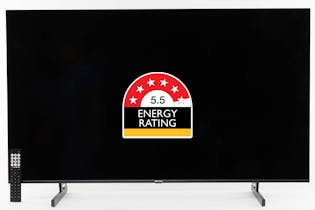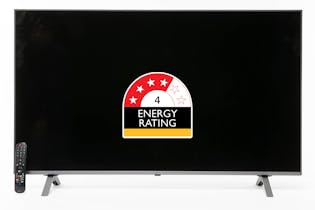Televisions
Find your perfect TV screen with our buying guide and test results.
Can't decide which TV to buy? Find the best TVs in NZ with our guide and test results. See test results for 4K, LCD, and OLED TVs from LG, Panasonic, Samsung, Sony and more.
Buy the best TV for your needs

We test TVs to find the best ones for real-world use. Our scientific testing is backed up by decades of experience, and our own member data. We’ll only recommend TVs you’ll love to own, that work well and keep working well for a long time. Our test results include:
• Performance (HD picture, 4K picture, SD picture, Sound, Ease of use)
• Energy use
• Predicted reliability and owner satisfaction (based on data from our member surveys)
• Plus, see the latest prices, product specs and features, member reviews and more.
Best TVs in 2024
-

Top-performing TV overall
-

Best 55-inch TV
-

Best budget buy
-

Best small TV

Get access to Consumer & see all reviews
✔ Personal support through our Consumer Rights Advice Line
✔ Premium articles and in-depth buying advice
✔ Add a Consumer magazine for even more exclusive content
What you need to know when buying a TV
Don’t come home with a telly that’s the wrong size or doesn’t have enough ports. Check out the top questions from the TV buying guide.
Screen types: We explain the difference between, LED, OLED and QLED, which have the best image quality and which are cheaper.
Screen size: You don't want to be squinting at a panel that's too small or seeing individual pixels on a giant screen. Find out how to choose the right size for your needs.
Resolution: Do you really need a 4K TV, or is regular HD enough?
The best time to buy: Our top tips for getting the best deal on your new telly.
Get the most out of your television
Discover the best TV streaming subscriptions, tips for enhancing picture and sound quality, and much more to enhance your home viewing experience.
Improve your TV's picture by changing these settings
It’s important to know how to personalise your TV picture to what suits you and your home. Here's how you can improve your TV's picture by changing some basic settings.
How to improve the sound quality on your TV
Most modern TVs are so thin there's no room for decent speakers. Here's how to get the most of your audiovisual setup with a sound bar or home theatre system.
How to keep your TV smart using a streaming device
Digital media players (also known as “dongles”) are small computers that plug in to a TV and take over its smart functions. If your smart TV has lost internet connectivity, or an app has stopped working, these small inexpensive devices are your best friend.
Best TV streaming subscriptions in New Zealand
We looked at six major video streaming providers and summarised which offer the best shows at the best prices.
Console gaming in 2024: which is right for you?
PlayStation, Xbox or Nintendo? Here's how to decide which gaming console suits you best.
People's Choice

Our People's Choice awards are granted to brands that consistently rate above average for customer satisfaction and meet out other performance criteria. Become a member and see which brands have earned a People’s Choice award.
Which brands are most reliable?

We asked thousands of Consumer members about their experience with products they've used to find out which brands are most reliable and satisfying to own. The results are available to members and Digital Pass holders.
Complete your home entertainment experience
How we test TVs

We don't just watch TV. Our tests are different - we put TVs through their paces in a lab setting, so you know our recommendations are backed by the latest science.
Our overall score combines test performance (how well the TV works) with predicted reliability (how likely models from the brand are to remain free of faults) and owner satisfaction (how likely owners of the brand are to be very satisfied).
We’ll only recommend TVs you’ll love to own, that work well and keep working well for a long time.

We know your rights
Got a problem with a faulty product, received shoddy service or been misled by a retailer? Our expert advisers can provide clear, practical advice that you can trust.
We've tested 46 televisions.
Find the right one for you.






.jpg&w=315&q=75)